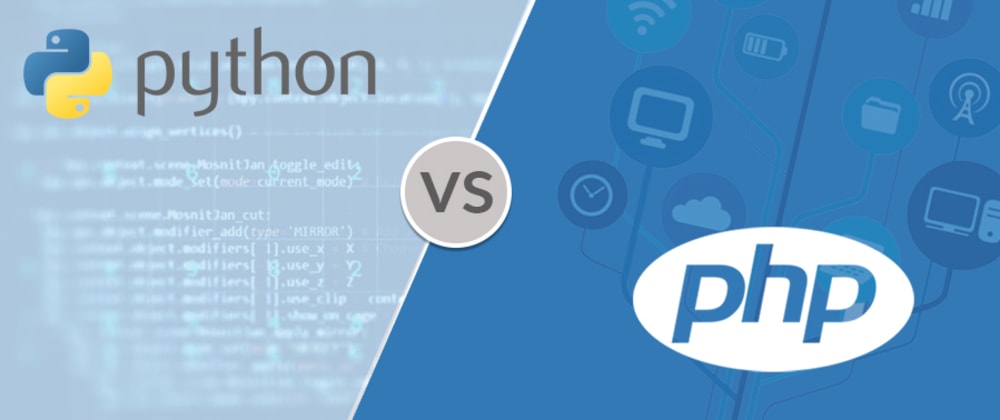If you have ever packed in a room with developers and want to be a center of controversy, just declare one language is better than another for backend development. Banners will be raised and soon the discussion room will turn into a battlefield where different developers will be crying for distinct languages that power the front-end and forms the backbone of the website.
Getting the answer for the perfect back-end language is troubling for every business, even when they restrict the discussion to the popular and widely used languages such as .Net, PHP, Python, Ruby, or Java to build the website from scratch.
When we look at the web development trends of the last two years, a steep upward trend is witnessed in PHP and Python. Both are considered as the top contenders for the crown of backend programming languages in the hotly contested web space. The Great War between PHP and Python doesn’t seem to end earlier, which makes it difficult to find a clear winner and readily embrace the language.
Here, the one-to-one comparison of the two- Python and PHP will help. Let’s dive in!
Learning curve
The learning curve means the time that developers take to master the syntax, tools, and resources to shape the web idea into a fully functional website. The lower the learning curve associated with a language, the faster the development and the lower the cost it will be.
Despite PHP being an age-old language, but Python beats it in terms of learning. Python is well-famous for its readability, shortcodes that can be written easily, and small mistakes during coding that don’t break the program as it’s highly tolerable for mistakes made in formatting.
On the other hand, PHP is not beginners-friendly, ill-famous for its ugly syntax, and designed for sophisticated web applications, that’s why there is a long way developers have to go for championing backend development leveraging PHP.
The result: Python wins by a greater margin from PHP.
Documentation
The detailed documentation is all-important for the rookie developers to get started building the website’s back-end. The endless forums, discussion boards, websites, and tutorials provide greater assistance in developing brilliant websites that perform to the notch in the stiff competition.
When the light is shed at the documentation of PHP and Python, both languages have extensive documentation which helps developers in every way.
The result: There is a clear draw on the question of documentation.
Community support
PHP being an old kid on the technology block, the community of developers is huge where expert PHP programmers continuously contributing and providing assistance like a pro. PHP developers get wider community support.
Python is not so old programming language, but its community is growing at a fast pace due to its outstanding features and resources. The community support provided by both languages is nearly equal.
The result: It’s neutral
Performance
It’s a universal protocol- speed is a killer that can kill the website if it takes more than three seconds to load. When we consider PHP programming language, it’s rocking the web space post version 7.0 release that has made it perform three times faster than what Python performs.
Python, despite having just in time (JIT) compiler that reduces the code compilation time, the language gets defeated by PHP in terms of performance.
The result: PHP scores over Python
Debugging
The presence of a good number of debugging tools increases the developer’s productivity as the developers don’t have to waste the time in tedious and repetitive tasks of debugging.
With a great developer ecosystem, Python has powerful debugger- Python Debugger (PDB) that’s well-documented, contain numerous debugging tools, and easy to use, which in turn, enable rookies to grasp and use them on-the-fly.
PHP provides a debugger package known as XDebug, but the number of debugging tools is fewer as opposed to Python’s debugger, which increases the developer’s efforts and time investment in web development.
The result: Python gains an upper hand over PHP.
Library support
The web application developers prefer to use existing libraries in place of reinventing the wheel in writing them as it saves a lot of time and efforts. Python comes with an array of pre-built libraries and third-party libraries that makes web development a breeze. For instance, Python provides support for machine learning libraries such as TensorFlow, SciKit Learn, Theano, or Keras that can be effortlessly integrated with the web framework and make the machine learning backed web development simple, quick, and easy.
PHP also has a package repository known as Packagist, that’s well-famed as a strong backbone of PHP web development, but it’s not as feature-rich as Python’s libraries.
The result: Python becomes a preference for building advanced web solutions.
Related: Top 10 Reasons Why to Choose Python Web Development Project
Popularity
Python is found as a great choice for backend development, but being a newbie as compared to PHP, it has not covered a large chunk of the market share. Although Python has started gaining ground after it’s used by Google for some projects. Now, it’s leveraged by leading platforms such as Instagram, Spotify, YouTube, and Pinterest for backend purpose.
PHP steals the show by dominating the webbed world with 80% of the market share and powering popular websites including Yahoo, Tumblr, Viber, Facebook, and more.
The result: There is a draw in the popularity contest.
Frameworks
Frameworks lend a hand to the developers by easy integration of the functionality without building them from scratch. When we look at the frameworks offered by Python, the Python frameworks such as Django, Pylons, Pyramid, and Flask are stable, secure, versatile and powerful that have even become the defacto standard for the comprehensive application development. But, the framework options offered by Python are limited.
When it comes to PHP, the plethora of frameworks are provided by PHP that is mature and feature-rich, and extremely fast and easy-to-use. The quantity of PHP and quality factor of Python brings draw in the comparison. However, the upfront cost comes with frameworks, but it paid off in terms of shorter development time and ease of setup.
The result: Undoubtedly, there is no superior to another.
Also Read: Top Web Development Frameworks to Opt for in 2019
Packaging
The modules and packages enable system modularity and code reuse in the applications. The seamless package management binds various projects together by facilitating writing, building, and sharing of the packages in a format that any developer can easily integrate into the application.
Python support package management using PIP tool for easy installation and management of the Python packages. The package management exists in PHP, but the codebases cannot be reused to this level.
The result: In this segment, Python can be declared as a winner.
To sum up
So which is the best? Good question, which certainly comes at the end of the technology comparison blogs. However, it’s difficult to narrow down the choice to one, especially when both contenders outdo each other in different scenarios. Several factors advocate PHP and others favor Python.
As the general perception goes, PHP has come a long way, that’s easy to learn and become expert at. Python helps in creating robust code, enable code reuse, jam-packed with debugging tools, and support scalability. On the neutral side, both are backed by huge community support, detailed documentation, and frameworks.
The aforementioned points are the decisive points and matching it with the versatility of the business use case aids in making the final decision. Consider the key elements to power the web backend with the right technology.
All the best!







Oldest comments (0)